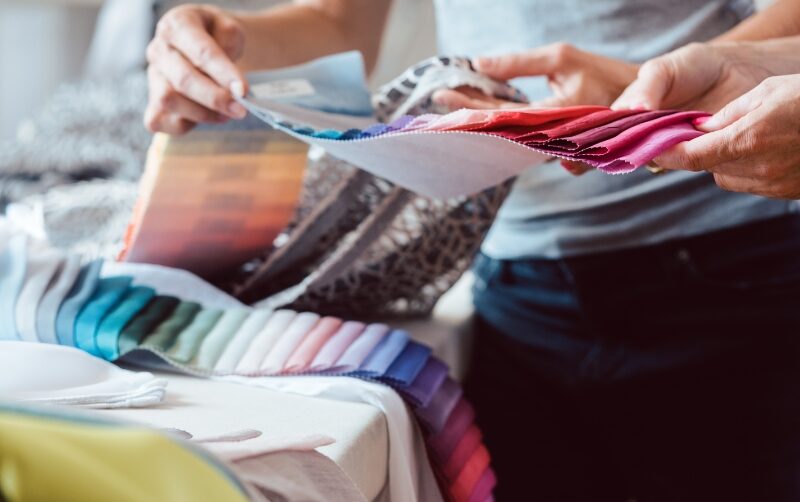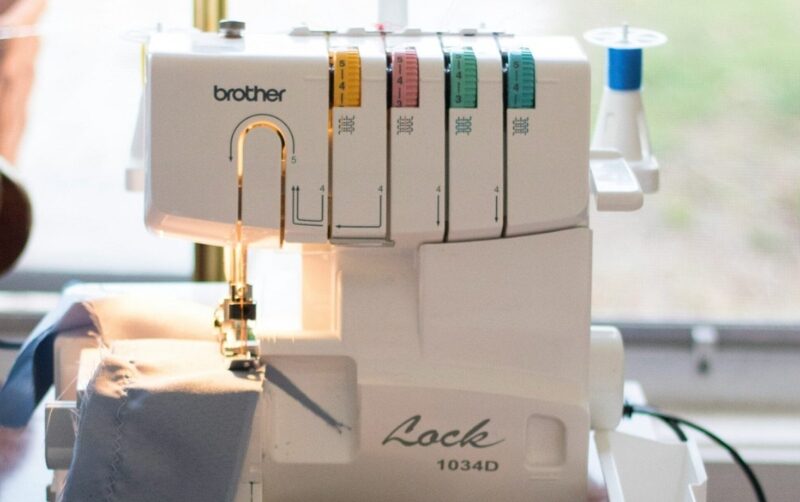Velvet is a luxurious and timeless fabric that adds elegance and texture to any sewing project. However, it also presents unique challenges due to its pile, stretch, and delicate nature. Whether you’re making clothing, accessories, or home décor, understanding how to handle velvet correctly will make all the difference in achieving professional results. In this guide, we’ll cover everything you need to know about sewing with velvet, from selecting the right type to mastering techniques that ensure a polished finish.
“Inspiration comes from the fabric itself.”

Understanding Velvet Fabric
Velvet is a woven fabric characterised by its soft, dense pile, which gives it a rich texture and depth. It can be made from various fibres, including:
- Cotton Velvet: Soft, breathable, and structured; ideal for upholstery and jackets.
- Silk Velvet: Luxurious, fluid, and delicate; best for eveningwear.
- Synthetic Velvet: Made from polyester or acetate; more affordable and wrinkle resistant.
- Stretch Velvet: Blended with spandex for flexibility; commonly used for form-fitting garments.
- Crushed Velvet: Has a textured, uneven surface; offers a unique, shimmering effect.
Each type has its own characteristics, so choosing the right one for your project is key.
Preparing Velvet for Sewing
Before cutting and sewing, velvet requires some special handling:
Pre-wash Considerations: Many velvets should not be washed; check care instructions and consider dry-cleaning.
Marking & Cutting
- Always cut with the nap running in the same direction to ensure a uniform look.
- Use a rotary cutter or sharp scissors to avoid shifting.
- Avoid excessive pinning to prevent damaging the pile – use pattern weights instead.
Sewing Techniques for Velvet
Velvet’s slippery texture and plush pile require careful sewing techniques:
- Use a Walking Foot: This helps prevent shifting layers and ensures even feeding through the machine.
- Adjust Machine Tension: A lower tension setting reduces puckering.
- Use Fine, Sharp Needles: A size 70/10 or 80/12 needle works best.
- Choose the Right Thread: A high-quality polyester thread prevents breakage.
- Baste Before Stitching: Hand-basting seams helps keep fabric in place.

Pressing Without Damaging the Pile
Velvet should never be pressed directly with an iron, as this can crush the pile:
- Use a needle board or thick towel under the fabric when pressing.
- Steam from a distance rather than applying direct heat.
- Finger-press seams whenever possible to avoid flattening the texture.
Hemming Velvet
Velvet hems can be tricky due to their bulk and tendency to shift:
- Use a blind hem stitch or hand-stitch for a clean finish.
- Consider hemming tape for extra stability.
- Allow the fabric to rest before hemming to prevent stretching.
Common Mistakes to Avoid
Cutting without checking the nap:
- Always ensure the fabric is cut in the same direction to avoid shade variations.
- Skipping stay-stitching: Stay-stitching prevents stretching and distortion.
- Using too much pressure on the presser foot: Reducing foot pressure prevents pile crushing.
Best Uses for Velvet
Velvet is perfect for:
- Garments: Dresses, blazers, eveningwear, and loungewear.
- Accessories: Bags, headbands, and scarves.
- Home Décor: Cushions, curtains, and upholstery.
Sewing with velvet requires patience and precision, but the results are well worth the effort. By choosing the right tools, handling the fabric carefully, and using proper sewing techniques, you can create stunning velvet pieces with confidence.
Watch this video for expert tips on handling, cutting, and sewing velvet with ease:


